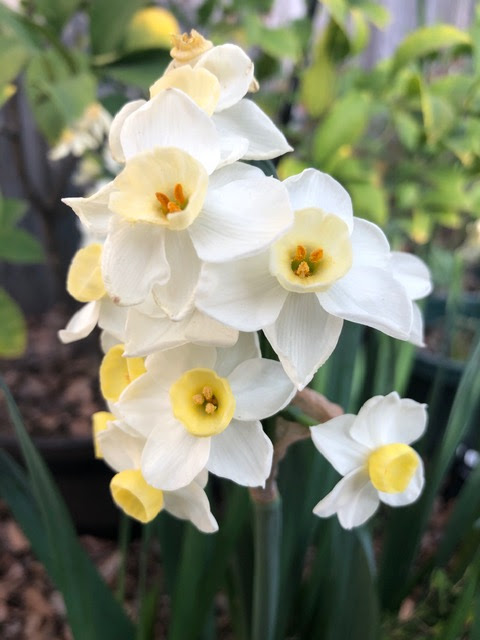
Basics and more in Placer County master gardeners' online workshop

|
|
So pretty in spring, but they should be planted now.
Learn how to get maximum effect from bulbs. (Photo: Kathy Morrison) |
It's bulb-planting season!
It's also time for gardeners to project themselves into the future -- specifically next spring. Anyone who wants clutches of tulips, clumps of hyacinths or dozens of daffodils in the 2022 garden must plan and plant now.
Where to start? The UC Master Gardeners of Placer County have that answer and more in their free Zoom workshop, "The Magic of Bulbs," this Saturday, Oct. 23, at 10:30 a.m.
The hourlong session will cover bulbs of all kinds, from buying and planting to caring and naturalizing. Learn how deep to plant daffodils, for example, or why tulip bulbs might need to be refrigerated before planting.
The Zoom link is: https://us02web.zoom.us/j/84105448029? and the passcode is: garden.
Incidentally, the Placer master gardeners' previous recorded workshops are listed and linked here: https://ucanr.edu/sites/ucmgplacer/files/354097.pdf Plenty of good information there, including composting and mulching, container gardening and growing citrus. Great viewing for a rainy day!
The Placer County master gardeners' website home page, with links to even more gardening information, is https://pcmg.ucanr.org/
-- Kathy Morrison
Comments
0 comments have been posted.Sacramento Digs Gardening to your inbox.
Sites We Like
Garden Checklist for week of July 21
Your garden needs you!
* Keep your vegetable garden watered, mulched and weeded. Water before 8 a.m. to reduce the chance of fungal infection and to conserve moisture.
* Feed vegetable plants bone meal, rock phosphate or other fertilizers high in phosphate to stimulate more blooms and fruiting. (But wait until daily high temperatures drop out of the 100s.)
* Don’t let tomatoes wilt or dry out completely. Give tomatoes a deep watering two to three times a week.
* Harvest vegetables promptly to encourage plants to produce more. Squash especially tends to grow rapidly in hot weather. Keep an eye on zucchini.
* Pinch back chrysanthemums for bushy plants and more flowers in September.
* Remove spent flowers from roses, daylilies and other bloomers as they finish flowering.
* Pinch off blooms from basil so the plant will grow more leaves.
* Cut back lavender after flowering to promote a second bloom.
* It's not too late to add a splash of color. Plant petunias, snapdragons, zinnias and marigolds.
* From seed, plant corn, pumpkins, radishes, winter squash and sunflowers.